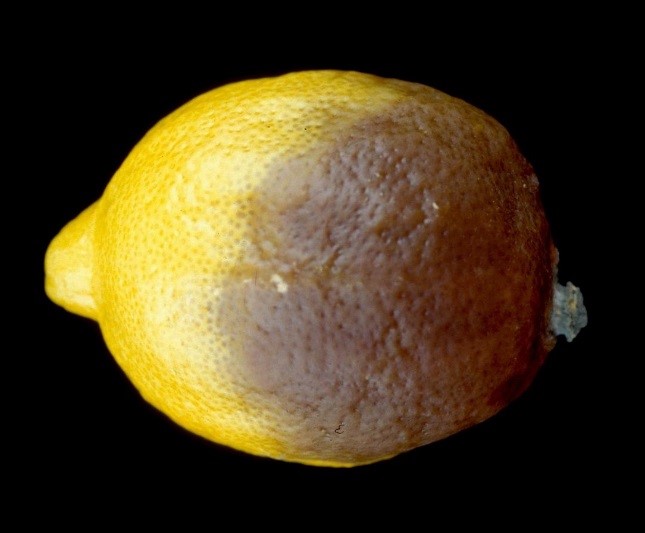
In the ongoing fight against Phytophthora spp., citrus growers have a new integrated pest management option. Fluopicolide is a welcome tool for growers that struggle to keep groves free of the bacterial and fungal pathogens that result in root damage, yield reductions and potential crop loss.
This description is apt for many. In Florida alone, an estimated 16 million citrus trees are currently battling Phytophthora spp. pathogens. Citrus growers in California, Texas and around the US endure similar issues.
“I certainly understand the impact of having additional chemistries available to combat Phytophthora diseases on citrus,” says Veronica Ancona, Ph.D., associate professor of citrus pathology at Texas A&M University-Kingsville. When she came to the Lonestar State, Ancona quickly learned that “one of the most important diseases affecting citrus production was Phytophthora foot rot.”
It’s noteworthy that Huanglongbing (HLB), one of citrus’ most devastating diseases, has also been shown to interact with Phytophthora spp., making it essential that growers have effective solutions against greening, foot rot and other related issues.
Previously, citrus growers were limited in the products approved for use on Phytophthora spp. Mefanoxam was the only active ingredient approved that had direct fungicidal activity against these plant pathogens. As such, it was a prime candidate for resistance and decreased efficacy due to overuse. In efficacy trials, fluopicolide was found to be as effective as mefanoxam for controlling the damaging populations of Phytophthora spp.
To combat the risk for resistance to mefanoxam, IR-4 Project Clearance Requests for fluopicolide on orange, grapefruit and lemon were nominated as A-level priorities for GLP (Good Laboratory Practice) residue studies in September 2012 at the IR-4 Food Use Workshop. The goal of the residue studies was to provide GLP residue data to support a tolerance and registration of fluopicolide in citrus. This use would provide another mode of action with direct fungicidal activity to promote rotation with soil applications of mefenoxam.
IR-4 GLP Residue Studies on Lemon, Grapefruit and Orange
In 2013, IR-4 initiated three GLP residue studies on orange, grapefruit and lemon with fluopicolide—marketed as Presidio® Fungicide by Valent USA Corporation. There were twelve field trials conducted on orange in Florida, Texas and California, six field trials conducted in grapefruit in Florida, Texas and California, and five field trials conducted in lemon in California according to OPPTS 860.1500 Crop Field Trial Guidelines.
For all studies, Presidio 4SC was applied by the Field Research Directors at the designated rate and use pattern as specified in the protocol. Once the trials for the studies were complete, the samples were sent to the IR-4 Western Region Laboratory, Department of Environmental Toxicology, at the University of California, Davis, for residue analysis. A processing study was also conducted on orange dried pulp, juice and oil.
After all field and lab data was received at IR-4 Headquarters, the Study Director wrote the final reports, which were thoroughly reviewed by the IR-4 Quality Assurance Unit. Once the final reports were signed, IR-4 and the registrant, Valent U.S.A. Corporation, worked together to develop the draft labels and submission documents in order for IR-4 to submit the data to the Environmental Protection Agency (EPA). After careful review of the data over several months, EPA approved registration and labeling of fluopicolide in citrus.
Next Steps for Citrus Growers
Presidio® Fungicide is now labeled for use in Citrus Fruit Group 10-10 including Australian desert lime; Australian finger-lime; Australian round lime; Brown River finger lime; calamondin; citron; citrus hybrids; grapefruit; Japanese summer grapefruit; kumquat; lemon; lime; Mediterranean mandarin; mount white lime; New Guinea wild lime; orange, sour; orange, sweet; pummelo; Russell River lime; satsuma mandarin; sweet lime; tachibana orange; Tahiti lime; tangelo; tangerine (mandarin); tangor; trifoliate orange; uniq fruit; cultivars, varieties, and/or hybrids of these.
This product has become a very beneficial tool to citrus growers since fluopicolide has a different mode of action than products currently registered for use against oomycetes like Phytophthora spp. in citrus. This makes it an ideal rotation partner. “Growers need alternative chemistries that are cost-effective against Phytophthora infections. Not just for resistance management, but also for ease of application,” Ancona says.
Ultimately, the registration of fluopicolide means citrus growers have another way to address common Phytophthora-related crop problems, including foot rot and susceptibility to HLB.
“The more chemical alternatives available for citrus,” Ancona says, “the better chances to maintain fungicide effectiveness.”
PR# 11110 Lemon (10-10B = Lemon/Lime Subgroup) (Phytophthora Brown Rot)
Karli Petrovic is a Contributing Editor, Meister Media Worldwide.
Kathryn Homa is a Biologist in Plant Pathology at IR-4 Headquarters.
